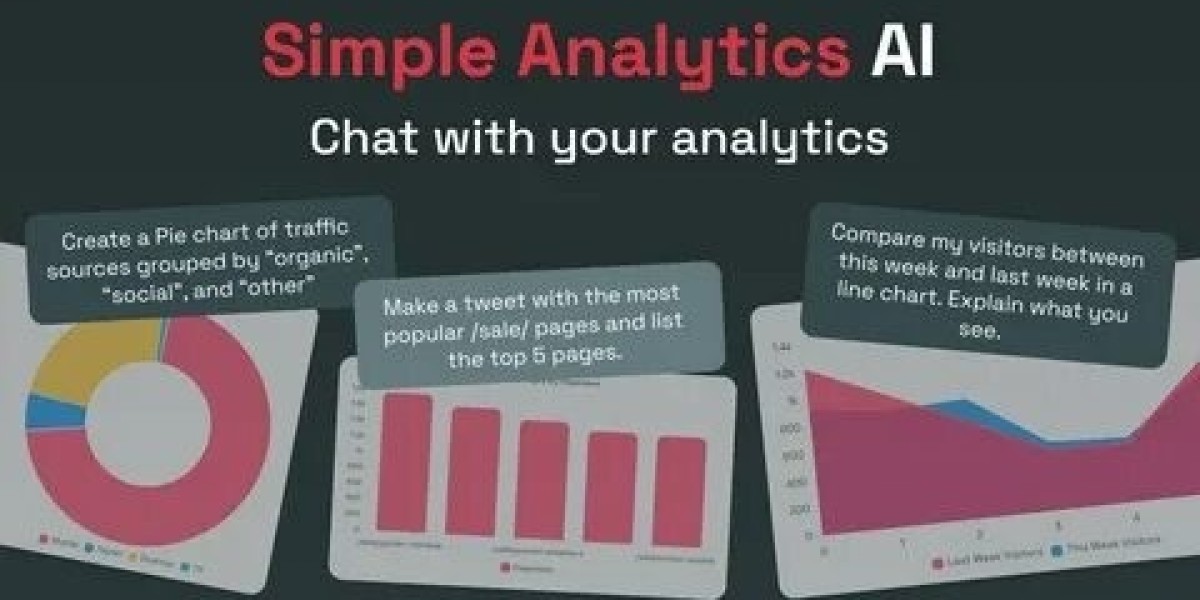AI-Powered Analytics is no longer just a buzzword in tech circles — it is transforming the way businesses operate, governments make decisions, and individuals experience services across multiple industries. From improving supply chains to predicting customer behavior, the influence of AI-driven insights is reshaping how the world works. This article explores how AI-Powered Analytics is being implemented in real-world scenarios and the meaningful change it is driving today.
How AI-Powered Analytics is Disrupting Traditional Business Models
Businesses that once relied solely on human expertise and manual processes are now turning to AI-Powered Analytics to gain deeper insights and streamline decision-making. Traditional methods are often slow, error-prone, and limited in scope. AI systems, however, can analyze vast amounts of data in real-time and uncover patterns that would be impossible for humans to detect alone.
Examples in Business Operations
- Retail: Retailers are using AI-based analytics to optimize inventory, personalize marketing campaigns, and predict purchasing trends.
- Finance: Financial institutions leverage these tools to detect fraud, manage risk, and automate investment strategies.
- Manufacturing: Predictive maintenance, powered by AI, is saving manufacturers millions by preventing equipment failures before they happen.
These implementations have proven that companies utilizing AI-Powered Analytics are not only more agile but also more competitive in their markets.
Revolutionizing Healthcare with Predictive Intelligence
Healthcare is one of the most critical sectors benefiting from AI-Powered Analytics. Hospitals and clinics generate immense amounts of data daily — from patient records to diagnostic imaging — and AI tools are turning this data into life-saving insights.
Key Impacts in the Medical Field
- Early Disease Detection: Algorithms are being trained to detect signs of diseases like cancer and diabetes earlier than traditional methods.
- Operational Efficiency: AI helps in optimizing hospital workflows, managing staff allocations, and reducing patient wait times.
- Personalized Treatment Plans: Based on historical data and patient profiles, AI can assist doctors in designing customized treatment paths.
The impact is not just theoretical — it is measurable. Hospitals using AI analytics report shorter patient stays, improved outcomes, and reduced operational costs.
How AI-Powered Analytics Enhances Customer Experiences
Understanding consumer behavior is at the heart of successful marketing and service strategies. AI-Powered Analytics offers businesses real-time insights into customer preferences, allowing for hyper-personalized experiences that increase engagement and brand loyalty.
Real-Time Personalization in Action
- E-Commerce: Recommendation engines suggest products based on browsing history, previous purchases, and customer segmentation.
- Customer Service: AI chatbots and virtual assistants provide instant responses while learning from past interactions to improve future conversations.
- Telecommunications: Companies use AI to predict customer churn and proactively address service issues, increasing retention.
These capabilities are not only improving customer satisfaction but also boosting revenue and operational efficiency.
Driving Smart City Innovations Through AI-Driven Data
Urban planners and municipal governments are now embracing AI-powered analytics to create smarter, more efficient cities. From traffic control to energy management, AI is optimizing urban living on a massive scale.
Smart City Use Cases
- Traffic Optimization: AI models analyze traffic patterns in real-time to control traffic lights and reduce congestion.
- Waste Management: Predictive analytics help cities plan optimal routes and pickup schedules, saving time and reducing carbon emissions.
- Public Safety: Law enforcement agencies use AI to forecast crime hotspots and allocate resources more effectively.
With growing urban populations, the role of AI in creating sustainable and livable cities is becoming more important every day.
Transforming Education Through Intelligent Learning Platforms
Education is experiencing a quiet revolution thanks to AI-Powered Analytics. By analyzing student data, schools and educational platforms are making learning more personalized, efficient, and inclusive.
Educational Enhancements Using AI
- Adaptive Learning Systems: These systems customize content based on individual student performance and learning pace.
- Predictive Performance Tracking: Educators can identify at-risk students early and provide targeted interventions.
- Content Recommendation: AI suggests supplementary learning materials tailored to the learner's strengths and weaknesses.
These innovations are helping to close learning gaps, particularly for students in under-resourced regions or those with learning challenges.
Streamlining Supply Chains and Logistics
In a global economy, efficient logistics is essential. AI-Powered Analytics provides businesses with the insights needed to navigate disruptions, reduce costs, and enhance delivery performance.
AI Applications in Logistics
- Demand Forecasting: Companies use historical data to accurately predict product demand and adjust supply chains accordingly.
- Route Optimization: AI determines the most efficient delivery routes, reducing fuel usage and delivery time.
- Inventory Management: Automated systems track stock levels in real-time, triggering reorders only when necessary.
These tools provide end-to-end visibility, helping businesses to remain agile even in uncertain times.
AI-Powered Analytics and Its Role in Financial Forecasting
The financial sector depends on the ability to forecast market movements and assess risk accurately. AI-driven systems are not only faster than human analysts but also capable of learning from vast and diverse datasets.
Innovations in Financial Analysis
- Market Sentiment Analysis: AI can interpret news, social media, and other unstructured data to gauge public sentiment on stocks and commodities.
- Credit Scoring: Fintech firms use AI to assess borrower risk more comprehensively, including alternative data sources.
- Robo-Advisors: These platforms offer automated investment advice based on real-time data and user-defined goals.
AI-Powered Analytics is making finance more accessible, more secure, and more efficient for institutions and individuals alike.
Real-World Challenges of Implementing AI-Powered Analytics
While the benefits are undeniable, adopting AI-Powered Analytics is not without challenges. Understanding these barriers is essential for successful implementation.
Key Obstacles to Overcome
- Data Privacy Concerns: Handling large volumes of personal data requires robust privacy protocols and transparency.
- Skill Gaps: Many organizations struggle to find qualified professionals who understand both AI and domain-specific applications.
- Integration with Legacy Systems: Older systems often lack compatibility with modern AI tools, leading to costly upgrades or replacements.
Despite these hurdles, the long-term value of AI-Powered Analytics far outweighs the initial difficulties. Companies that invest in proper training, ethical data handling, and infrastructure upgrades are reaping the rewards.
What the Future Holds for AI-Powered Analytics
The momentum behind AI-Powered Analytics shows no signs of slowing. As machine learning algorithms become more advanced and data sources more diverse, we can expect even more innovative applications.
Key Trends to Watch
- Edge AI: Processing data closer to the source (like smart devices) will reduce latency and enhance decision-making.
- Explainable AI (XAI): Tools that clarify how AI makes decisions will build trust and ensure regulatory compliance.
- Democratization of AI: More platforms will offer user-friendly tools that allow non-technical users to harness the power of AI.
These trends will continue to redefine industries and open new opportunities for growth and innovation.
Final Thoughts: Why Embracing AI-Powered Analytics Is No Longer Optional
The real-world impact of AI-Powered Analytics is clear — faster decisions, improved outcomes, and smarter operations across almost every sector. Organizations that embrace these technologies are not just keeping up with the times; they are shaping the future.
By understanding both the opportunities and the challenges, and by investing in the right infrastructure and talent, businesses and institutions can unlock the full potential of AI-Powered Analytics. The data revolution is here — and those who act now will lead the way.
Frequently Asked Questions (FAQs)
- What is AI-Powered Analytics?
AI-Powered Analytics refers to the use of artificial intelligence algorithms to process, analyze, and gain insights from data. These insights help in decision-making, forecasting, and automation. - Is AI-Powered Analytics only for large businesses?
No, even small and medium-sized businesses can benefit from AI tools, especially as more affordable and user-friendly platforms become available. - Are there risks in using AI for analytics?
Yes, issues like data privacy, algorithmic bias, and lack of transparency can pose risks. However, proper governance and ethical AI practices can mitigate these challenges.



